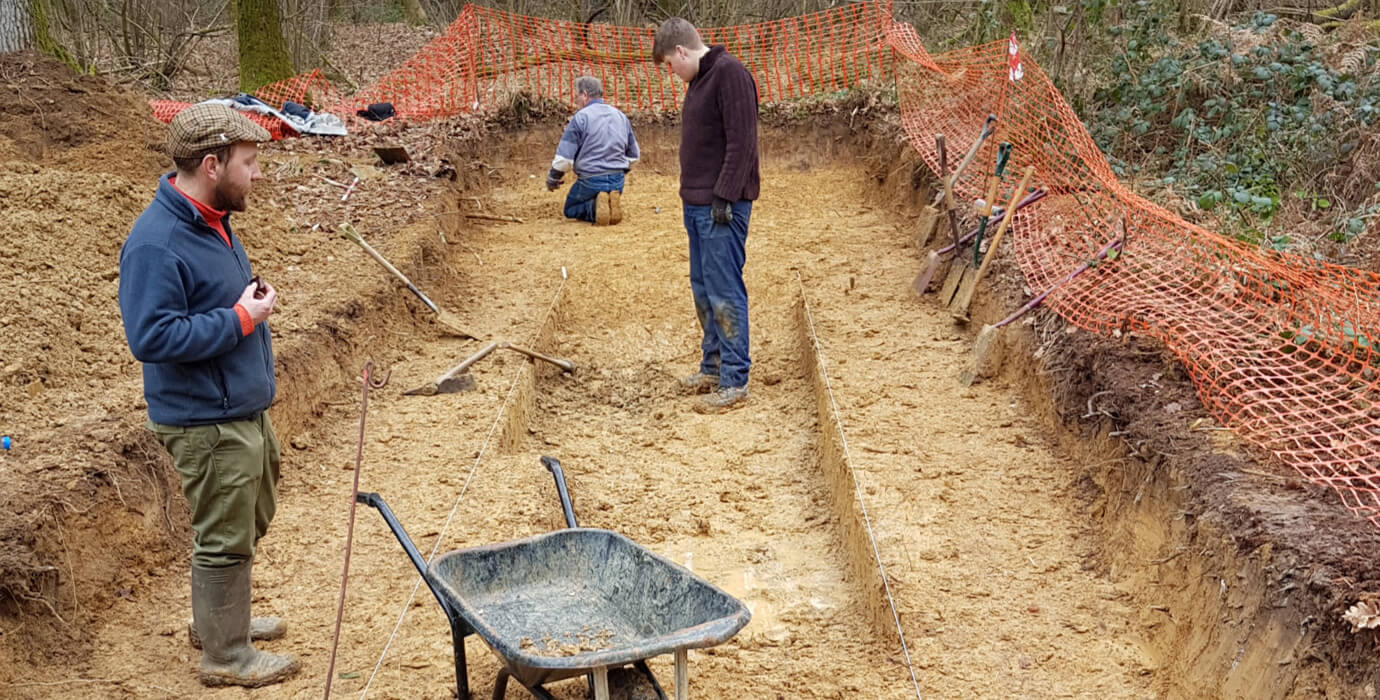Category
Author
Englefield Estate
Archaeological investigations are being conducted in ancient woodland on the Estate by a team from the University of Reading to reveal the prehistoric past of Pamber Forest.
The Silchester project team from the university’s Archaeology department has found a series of six or more previously unknown prehistoric monuments using aerial survey techniques within the Site of Special Scientific Interest (SSSI), which lies around six miles north of Basingstoke. The forest covers approximately 480 acres of land between Newbury, Reading and Basingstoke and is owned by the Estate and managed by the Hampshire & Isle of Wight Wildlife Trust in partnership with Basingstoke and Deane Borough Council.
Partial outlines of the monuments were found by the team through the examination of enhanced LiDAR (Light Detection and Ranging) images by their aerial interpreter Krysia Truscoe. These images provide a view of ground topography despite the heavily forested nature of the site. Their discovery prompted the University of Reading’s Dr Catherine Barnett and Professor Michael Fulford to approach the Estate to request permission for ground investigations including limited excavation of these ecologically and archaeologically sensitive sites.
The work is part of the university’s Silchester Environs project, a large-scale research project examining the landscape around the Late Iron Age and Roman town of Calleva Atrebatum at Silchester. The overarching aim is to clarify the nature of use and settlement of the wider landscape before and during the establishment of the town.
Dr Barnett, Research Manager, said: “Excavation and analysis of the sites in Pamber Forest, along with others on the Englefield Estate such as Windabout Copse will be key in understanding the establishment of prehistoric homes, farms, mortuary sites and routeways and to examine human-environment relationships and agricultural developments by the local population over this time.
“A tremendous amount of information has already been uncovered and celebrated thanks to past research spanning nearly 20 years under the Silchester Town Life Project, led by Prof Michael Fulford and Amanda Clarke in the nearby town of Silchester, where the Roman city walls and amphitheatre are now actively preserved and open to the public. We are hoping that this new phase of research will provide insights into what life and landscape were like beyond the city walls and how that enabled the establishment of this important urban centre.”
The field team, headed up by Nick Pankhurst and Dan Wheeler, will be digging sections through the Pamber Forest enclosures and taking samples for more detailed laboratory analysis. Radiocarbon dating and analysis of organic remains excavated from the ditches, bank and internal features of the enclosures, such as seeds, pollen and charcoal, will provide detailed data on the timing of these events and how people exploited, changed and managed these ancient ecosystems, while artefacts such as pottery and metalwork will provide valuable insight into daily rural life in prehistory.
In order to carry out the work at Pamber Forest, the team have had to gain authorisation from the organisations who own, manage and protect the estate, to ensure that the excavation work will not disturb protected wildlife or damage the ancient oak-hazel forest, and a close working partnership has been formed between all the parties involved to enable this exciting new work to go ahead.
Richard Edwards, Head of Forestry at the Englefield Estate, said: “Our involvement, as stewards of the woodland with the Wildlife Trust, is to ensure that any research work is carried out sensitively. Our hope is that the ongoing studies by the team at Reading University’s Archaeology will enhance our understanding of this ancient woodland.”
More than a third of the 1,400 hectares of woodland on the Englefield Estate is designated as Ancient Woodland by Natural England.
